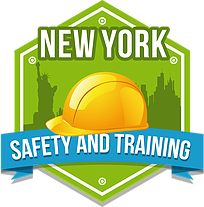- a) inspection of an air-purifying respirator;
- b) donning and doffing an air-purifying respirator; and
- c) respirator user seal check.
The intended audience for this course are Disaster Site Workers who provide skilled support services or site clean-up services in response to a disaster. Most of this audience are members of the construction trades, therefore this is the focus of the curriculum. OSHA recognizes that other skilled support personnel, such as utility workers and public works employees, may not have a construction background. Trainers for the Disaster Site Worker Course will need to assess their audience and modify the course materials as appropriate to provide visual materials, examples, scenarios, case studies and lessons learned from actual events that will engage these workers and facilitate accomplishing the overall course goal. With the exception of the lesson on CBRNE (chemical, biological, radiological, nuclear, and explosives) agents, the curriculum for this course applies equally to natural and man-made disasters. If this course is given to workers who are expected to respond primarily to natural disasters, trainers should supply additional material relevant to the specific type of disaster that is anticipated. In all cases, the objectives listed in the manual for each lesson must be met. This course emphasizes knowledge, precautions and personal protection essential to maintaining a worker’s personal safety and health at a disaster site. Workers will perform an inspection of an appropriate air-purifying respirator, don the respirator and perform a user seal check, and doff the respirator. This training provides students an opportunity to practice their new knowledge, skills and attitudes through discussion, planned exercises, demonstrations and presentations. Trainers must cover all of the following Disaster Site Worker topics. OSHA has provided the typical length of each topic necessary to fulfill the objectives of Course #7600, Disaster Site Worker Course. Although time spent in each topic may vary from our recommended length, the total course time must be at least 15 hours. Participants will complete a “Theme Worksheet” throughout the course as reinforcement of the learning. A discussion of notes made to complete the “Theme Worksheet” will be facilitated at the end of the course to enhance the retention and transfer of their new knowledge back on the job. The course will conclude with a final assessment in the form of an exercise that will measure the participants’ mastery of all of the course objectives. Training should emphasize hazard identification, avoidance, control and prevention, not OSHA standards. The topic requirements are as follows:
- a) Introduction/Overview (1.25 hours)
- b) Incident Command System/Unified Command Systems (0.75 hour)
- c) Safety Hazards (2.5 hours)
- d) Health Hazards (2.0 hours)
- e) CBRNE Agents (1.0 hour)
- f) Traumatic Incident Stress Awareness (0.50 hour)
- g) Respiratory Protection (3.5 hours)
- h) Other Personal Protective Equipment (1.25 hours)
- i) Decontamination (1.5 hours)
- j) Final Exercise (0.75 hour)
